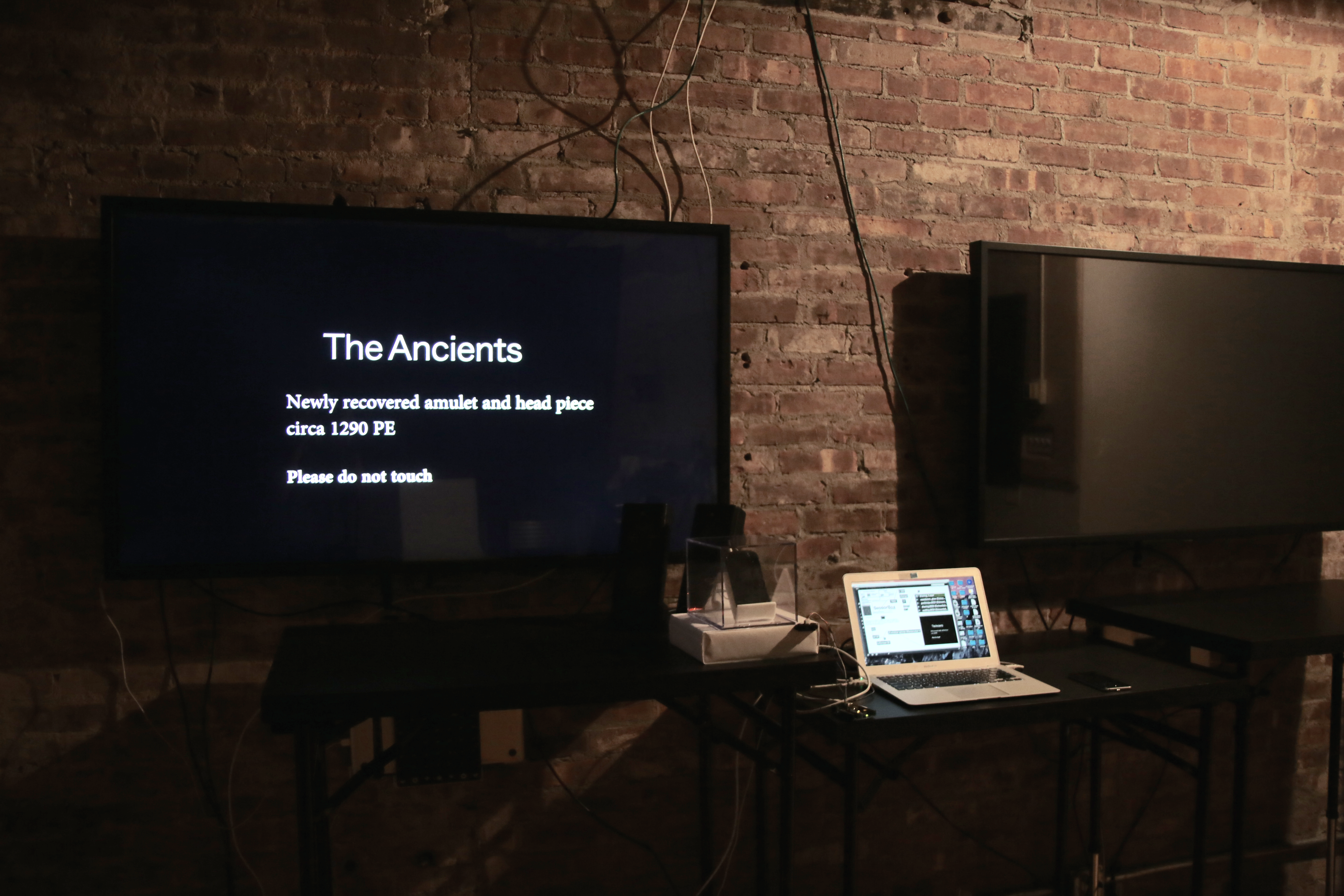For my final project I wanted to explore the relationship between magic, mythology, & ritual and scientific & technological advancement. My final piece was something of a museum exhibit but from the perspective of a new species of human evolved from homo sapiens that migrated from earth after its destruction. I hoped to raise questions about our relationship to our things, how myth is created and transformed, and the loss of information over time.

Exhibit set up includes the title of the exhibit, a present-day cell phone and earbuds presented as acient artifacts in a display case, and a proximity sensor that allows visitors to cycle through educational videos explaining future-scholars’ understanding of their meaning and use
The exhibit allows visitors to play clips separately. All the clips have been edited together and put up on vimeo.
Inspired by Michal Rovner’s mesmerizing pieces of abstract forms and Curious Rituals, a blog and book that catalogs the behavioral changes that have accompanied the adoption of different technologies, I set out to find a way to document the habits, now taken for granted, that have transformed our interaction with the world and keep us perpetually tethered to the internet.
Many objects that now inhabit our world, including cell phones, laptops, and the servers that power the internet, are monolithic, giving little clue as to their use without previous knowledge and context. I wondered how people trying to reconstruct our way of life might understand them, imagining that their connection to networks would be rendered invisible. I also considered Riane Eisler’s The Chalice and the Blade, which re-interprets archaeological literature and proposes new theories of understanding our past, raising questions about the original mis/interpretation of cave paintings and artifacts from different societies.